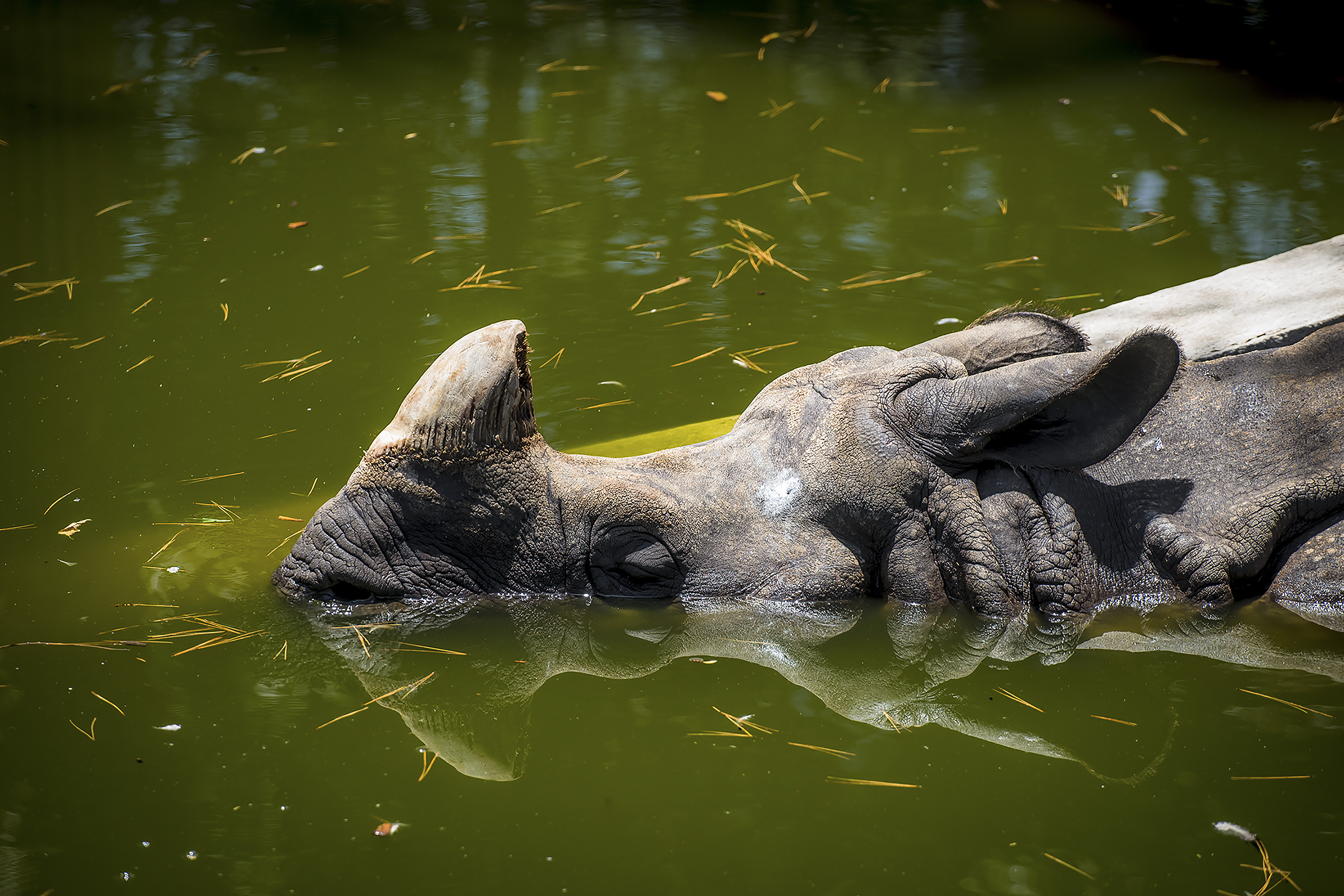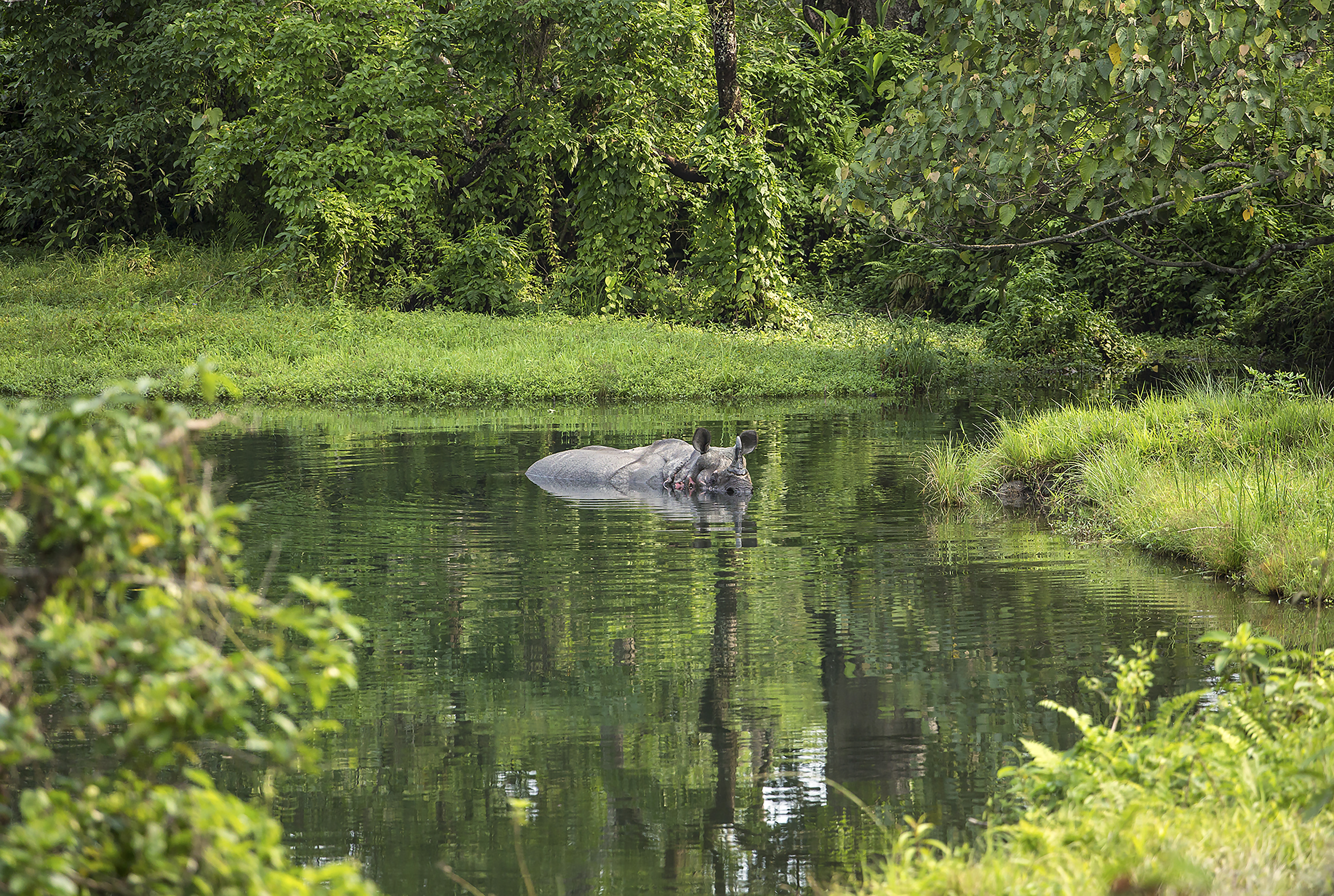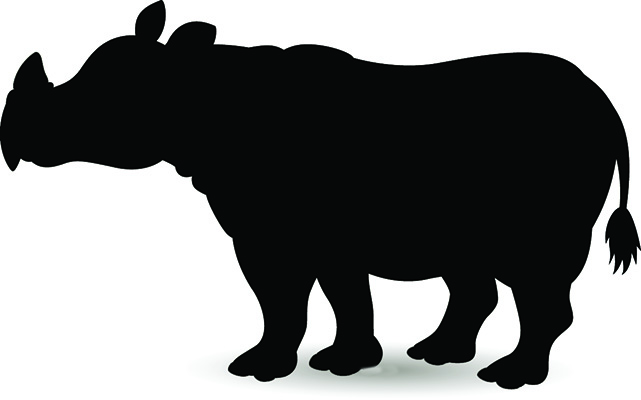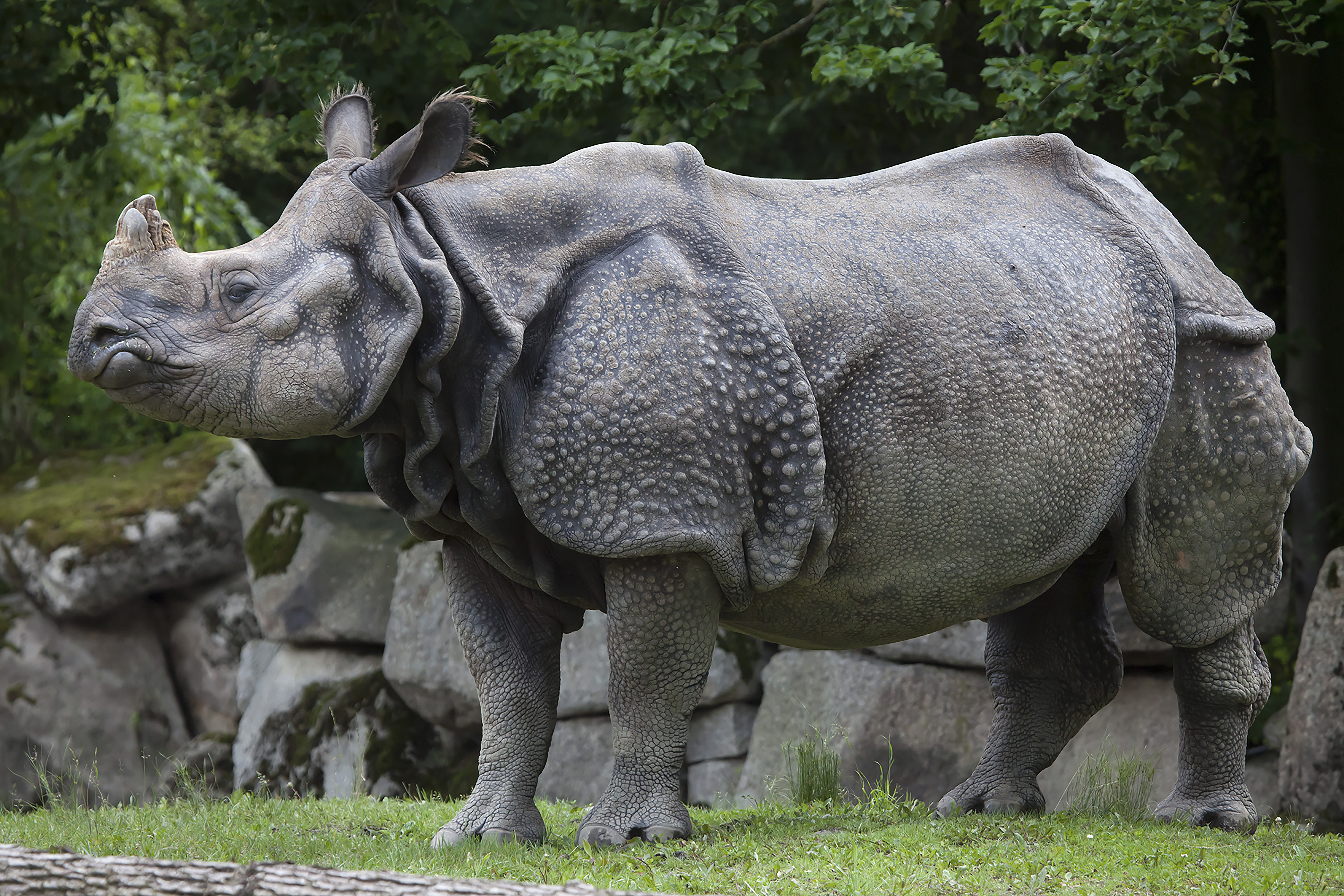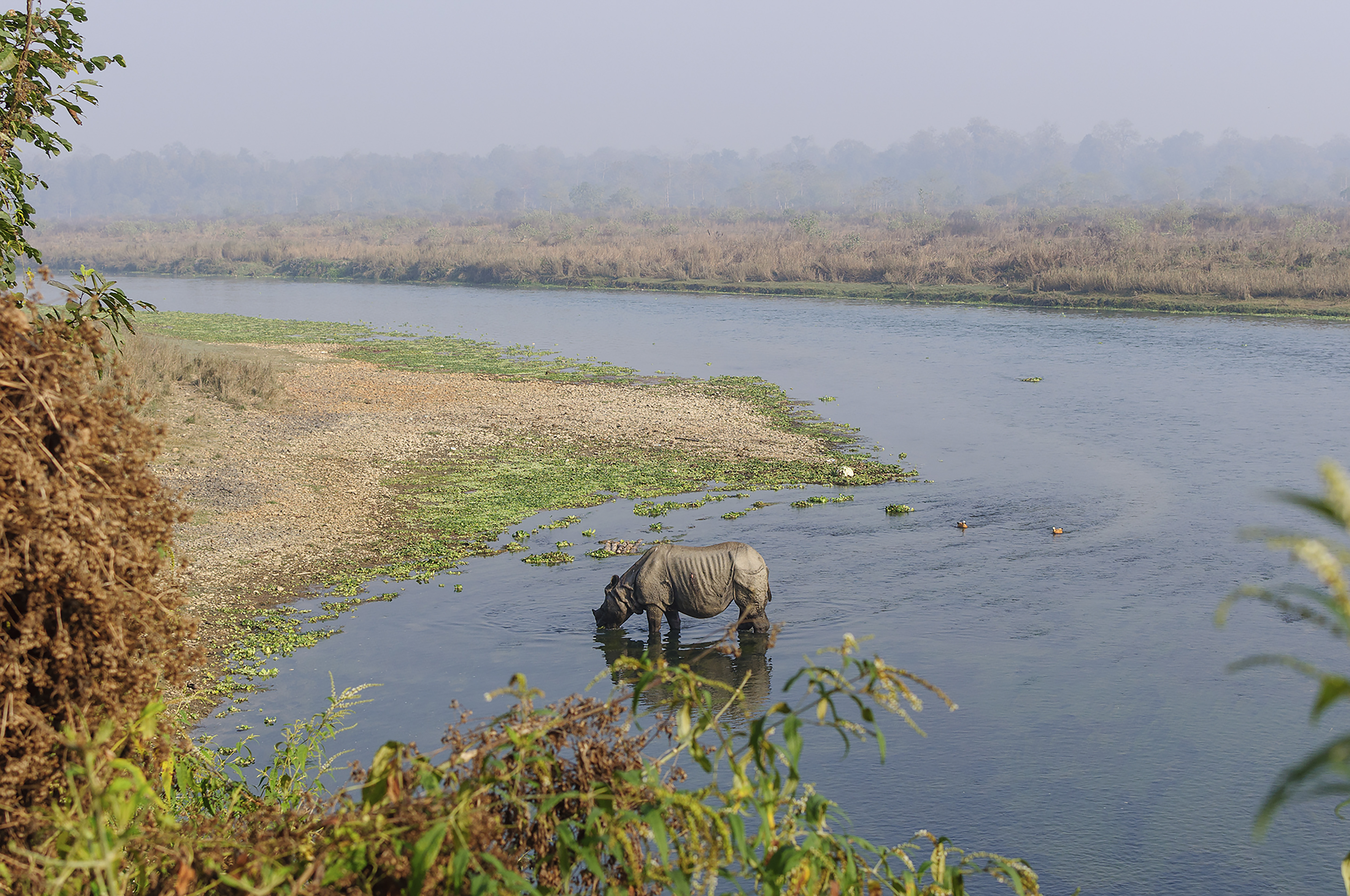Indian Rhino
(Rhinoceros unicornis)
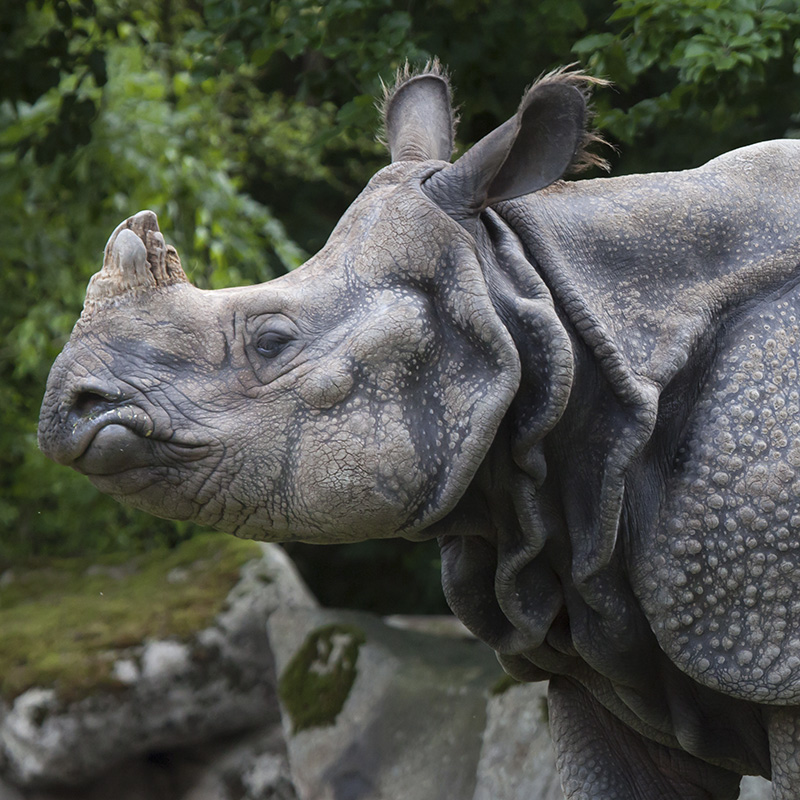
Naga-Manapuri-Chin Hills Moist Forests
STATISTICS
Height up to
186 cm
Length up to
38 meters
Weight up to
2200 kgs
Lifespan
40 Years
Good Swimmer - Excellent Hearing - Sharp Sense of Smell - Stores Water in Skin to Keep Cool
The Indian Rhinoceros or the Greater One-Horned Rhinoceros is the largest of the Asian rhinos and looks almost armor plated with its folds of loose skin and tubercles. Like all rhinos, it has a horn which can grow up to 53 cm and is made up of keratin. It is the second largest mammal in Asia next to the Asian Elephant.
The Indian Rhino prefers floodplains and swamps adjacent to the forest where it feeds primarily on grasses. It has a prehensile upper lip used to wrap around grasses and bring them into its mouth. It plays an important role in maintaining grasslands by selectively grazing more common species and therefore ensuring a diversity of species within those grasslands.
This species is often accompanied by tick birds and egrets that ride on its back and feed off of its skin. Egrets await disturbed insects that fly up as the Indian Rhino walks. This rhino is a solitary creature and only congregates near waterholes. Its home range extends up to 8 km, and it will tolerate other males passing by.
The Indian Rhino is most active in the early morning and evening spending the rest of the day wallowing in lakes, and puddles to cool down as it is a good swimmer. Its folds of skin trap water and keep it cool, even when it returns to land. It has an excellent sense of hearing and smell but poor eyesight.
BIODIVERSITY BENEFIT
Ecosystem Engineer
THREATS
Population Density
High population rates in some parks leads to low breeding rates.
Habitat Loss
Human expansion threatens this species.
Human - Animal Conflict
As habitats shrink, rhinos leave the parks to raid villages which leads to their persecution.
PROTECT THE WILDARK 100
